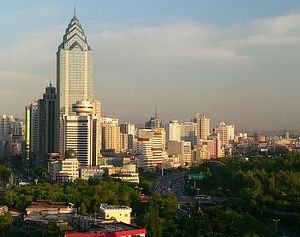Time for some Friday China links:
Reuters reports that the Turkestan Islamic Party (TIP) has claimed responsibility for the stabbing and bombing attack at South Railway Station in Urumqi, Xinjiang. The April 30 attack left three dead (including the two attackers) and wounded 79. The SITE Intelligence Group, which monitors terrorist activity around the globe, said that TIP had released a video demonstrating the construction of a briefcase bomb, which the video claimed was used in Urumqi. The TIP has also claimed responsibility for the fatal car crash in Tiananmen Square last October and praised the March stabbings in Kunming.
In response, Chinese Foreign Ministry spokesperson Hua Chunying said that the online video “still needs to be verified.” However, she emphasized that there are “some extreme and violent terrorist organizations that are ready to take whatever measures they can to collude with internal and external forces and launch violent terrorist activities in Xinjiang or other regions in China.” Hua called for international support for China in its fight against terrorism.
In other news, after environmentally-motivated protests over construction projects in Maoming, Guangzhou and in the city of Yuhang near Hangzhou, Tea Leaf Nation explores whether such protests are actually effective. Generally, the protests result in local authorities promising to halt the offending project, but sometimes construction is quietly restarted months later. Other times, the project is relocated a few miles away, generally to places where residents are poorer and less educated.
TLN notes that such NIMBY (“not in my backyard”) protests, though “cooperative and upbeat” when they first began in 2007, have become more violent recently. Police tactics have also become more forceful, though it’s difficult to say whether this is a cause or an effect of increased violence by protestors. Either way, TLN notes that China’s official media seems to be speaking out more strongly against the protests, hinting that the government may be losing its tolerance for NIMBY demonstrations.
Over at ChinaFile, a translation from Sohu Business (accompanied by charts and graphics) explains why China’s urbanization is “fake.” For anyone looking for a detailed yet easy to understand explanation of the issues facing rural migrants to Chinese cities, this is a great place to start. The piece explains how the lack of a hukou or residence permit for the cities has a snowball effect on rural migrants — they have less access to education, healthcare, and social security, which exacerbates the existing wealth gap. The article also explains how China’s policies restricting the sale of land prevents natural urbanization, as rural residents cannot receive a fair price for their single most valuable asset, their land.
Finally, China Daily confirms that China and Russia plan to sign a long-awaited natural gas deal during President Vladimir Putin’s visit to Beijing next week. Sources at China National Petroleum Corp. told China Daily that, as rumored, price had been the major hang-up on the deal. However, one expert said the final price was expected to be “close to Russia’s demands,” refuting speculation that Moscow had caved on the issue. The deal will see Russia’s Gazprom OAO supply China with 38 billion cubic meters of gas each year beginning in 2018. That will increase to 68 billion cubic meters at an unspecified time in the future.

































